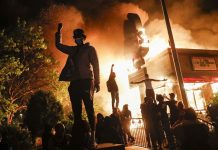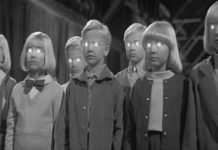Millions of Americans are living with a misguided sense of resentment, a desire to see the country crash and burn because of what the public schools are teaching. America is a nation founded on slavery and racism, and its institutions are designed to perpetuate white supremacy. They are carrying the perception that everyone is racist, and they are living in a country that systematically discriminates against them. If an individual were to tell a psychotherapist the world was out to get him, he would be diagnosed as a paranoid schizophrenic. Yet, this is the narrative that influences the worldview of up-and-coming generations of Americans. It is a distorted version of reality infecting the minds of students from kindergarten to post-graduate school. Does it reflect reality, or is it all a socially constructed perception designed to keep racial animosity alive? The pushers of Critical Race Theory like to tell us that race is a construct, yet through the CRT lens, they insist we see everything through their race-based perspectives. They are the ones keeping the perceptions of racism alive.
Perceptions can largely be formed by the language we use in our everyday lives. We see the world through the meanings of the words we use. The way the world is presented to us through mass media and education can also influence our perceptions. The book, Media Effects: Advances in Theory and Research, states that the media narratives play a major role in shaping our perceptions of what should be considered important issues of the day. Educational doctrines which push a particular lesson would do the same. It is a simple concept; people tend to see their reality through the lens of whichever worldview they cling to, or whatever information they are being fed. Perceptions, however, do not necessarily reflect the true state of the world. According to Psychology Today, our perceptions have a “potent influence” on the way we view reality.
“Think of it this way. Perception acts as a lens through which we view reality. Our perceptions influence how we focus on, process, remember, interpret, understand, synthesize, decide about, and act on reality. In doing so, our tendency is to assume that how we perceive reality is an accurate representation of what reality truly is. But it’s not. The problem is that the lens through which we perceive is often warped in the first place by our genetic predispositions, past experiences, prior knowledge, emotions, preconceived notions, self-interest, and cognitive distortions.” (Taylor, 2019)
Perceptions are influenced by many things. Past experiences, emotions, prior knowledge, and even preconceived notions. Individuals viewing their reality through the lens of Critical Race Theory are being affected in many ways. Their entire worldview, and ways in which they process information, are being infected with the perceptions of racial oppression. Someone who has been taught the tenets of CRT their whole life will undoubtedly see hidden forms of racism and microaggressions in any interactions with white people. Their decision-making processes will be tainted by the lie that our society is working against them. This isn’t to argue that minorities in America haven’t experienced racism of any kind. Only that they are being fed information that creates the perception it is more prevalent than it is.
Why is this important? According to the book, Critical Race Theory: An Introduction, much of the scholarship pertaining to CRT is based on what they refer to as counter-story telling or narrative analysis. Counter storytelling is used as a way of challenging or mocking mainstream beliefs of American society. Critical race scholars claim that a legitimate function of counter-story telling, which they admittedly refer to as fiction in some cases, is to attack the “preconceived notions that” they claim “marginalize others.” Stories allow victims to identify racial discrimination while at the same time, offering a way to correct beliefs that lead to racial biases. Are these stories real or imagined? In no way does this argument attempt to take away from the experiences of older Americans who lived through trying times. There are racial realities that live on in the minds of many. The question is whether their memories are depictions that reflect modern times, and to what extent they are influencing the worldviews of others.
The use of counter-narratives does not necessarily paint a picture that represents reality. They only tell the story through the perceptions of someone who either experienced racism in the past or is being taught the tenets of Critical Race Theory in school, if they are even based on reality. A good example of the use of counter-storytelling is the book Using Critical Theory: How to Read and Write About Literature. Within its pages are stories, like The Battle Royal, depicting the experiences of individuals that CRT scholars would consider being marginalized. Their perspectives are contrasted with the mainstream narrative. The reader is encouraged to view the stories through a Marxist lens.
“Marxist theory points out, however, that our belief in the American Dream blinds us to the reality that a vast number of people have not had and do not have equal opportunity in education, employment, or housing due to such factors as, for example, their gender, race, religion, sexual orientation, and socioeconomic class. And worse, the American Dream leads us to believe that poor people who are unable to significantly improve their financial status must be shiftless and lazy or in some other way undeserving of decent living conditions. After all, the American Dream tells us that all it takes to make it in America is hard work and determination and that those who do not make it, have only themselves to blame.” (Tyson, Using Critical Theory)
Critical Race Theory, deriving its origins from the Frankfurt School’s Critical Theory, is already tainted with a Marxist bias meant to create the perception that the world represents a system of class/economic warfare. When the tenets of Critical Race Theory are presented, it is being done to influence the beliefs of those who can be motivated to push for social change. Critical Race Theory, according to Delfado and Stefancic, is an academic discipline that differs from others because it contains an activist element that encourages its adherents to change a system they are being trained to view as racist and oppressive.
Communists have used this narrative as a weapon against capitalism since Marx wrote his Communist Manifesto. They have presented their worldview as fair and egalitarian while presenting capitalism as one which exploits workers and rapes nations of their natural resources. Their hands are also tainted with the blood of racial warfare, as a book called Color, Communism and Common Sense implicates communist efforts to stir up racial discontent in America. The author, Manning Johnson, was a black American who was high a ranking leader in The Communist Party USA. He left upon realizing the plans of the Communists to stir up racial warfare. Does this story matter to Critical Race scholars? Probably not.
According to Johnson, this plan entailed the infiltration of black churches and communities with the sole purpose of teaching black Americans that the cause of all of their problems was the white man. Johnson writes that one of the aims was to create the perception that blacks in America couldn’t accomplish anything. The intent was to train them to “feel sorry for themselves, blame others for his failures, ignore the countless opportunities around him, be jealous of the progress of other racial and national groups, and look for easy and quick solutions as a substitute for the harsh realities of competitive struggle to get ahead.” This book was written in 1958. To what extent did these efforts influence today’s Critical Race Theory? Being Marxist in origin, it is hard to argue that the goal of CRT is not to stir up racial discontent. One of the main tenets of CRT is white privilege. This is the idea that white people are beneficiaries of unearned privileges in society, and all of America’s institutions are working for the betterment of white society alone. How does this not cause hate and discontent in the minds of young black students?
According to the book Critical Race Theory in Education: All God’s Children Got a Song, prominent African American figures Carter G. Woodson and W.E.B. DeBois were very influential in CRT scholarship as well. Both are known for being among the first black Americas to earn doctoral degrees in a prestigious university. These are major accomplishments that, theoretically, could have a major impact on current thinking about racial issues in America. Woodson, for example, took the view that education for black people represented the interests of the oppressors, and that all emphasis was placed on white achievement, which crushed the motivations of black students. What motivated him to continue in his studies? What makes him so different from today’s students? Would it make a difference if his message contained an inspirational drive to rise above the obstacles? Dubois, who earned a Ph.D. from Harvard argued that blacks in America suffered from a dual identity. One they feel must conform with the hegemonic culture of the majority and the other which seeks to understand their own. If these men had a major impact on today’s CRT scholarship, to what extent do their opinions of education in America influence the perceptions of young black students today? Seems like a fair question.
Our realities can be shaped and influenced by our perceptions. Perceptions are influenced by the information we receive and the worldviews we choose to adhere to. Critical Race Theory is creating the perception in millions of young Americans that they live in a hateful country where behind every corner lurks a vengeful racist who hates blacks, gays, Hispanics, or any other group which has been labeled a marginalized minority. The tenets of CRT have been influenced by Marxist ideology, which views the world from the extremely biased lens of class and socioeconomic warfare, and the worldviews of very influential African American scholars who hold the historic honors of being the first to earn a doctoral degree. Why not teach the amazing abilities of black Americans to overcome their history of slavery and other racial wrongs which undoubtedly have been committed? How would racial issues be different today had Dubois and Woodson encouraged others to believe that they too could rise above the fray with hard work and dedication, and achieve whatever they set their minds to? The answer is simple. If there wasn’t a marginalized group who believes they are oppressed victims, there would be no discontent from which to push for social change. Critical Race Theory doesn’t seek equality but attempts to create an activist front, using color-conscious efforts, to transform our society into what Marxists claim, is one that is better for everyone. We all know what that is.

























[…] circumstances surrounding them. This may be true, to a degree, but just as I had asked in my previous article, would things be different if the whole issue was viewed from a different perspective? The […]
[…] circumstances surrounding them. This may be true, to a degree, but just as I had asked in my previous article, would things be different if the whole issue was viewed from a different perspective? The […]
[…] circumstances surrounding them. This may be true, to a degree, but just as I had asked in my previous article, would things be different if the whole issue was viewed from a different perspective? The […]
[…] Article posted with permission from David Risselada […]
[…] Article posted with permission from David Risselada […]